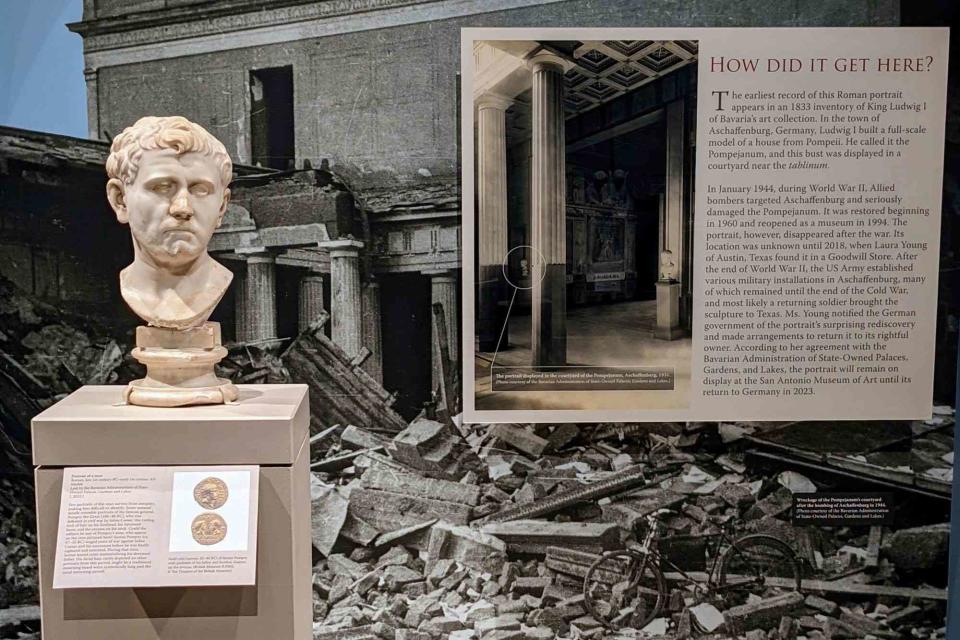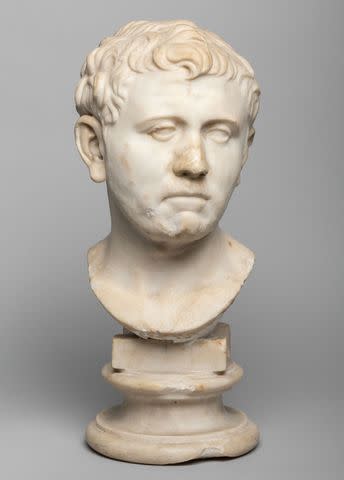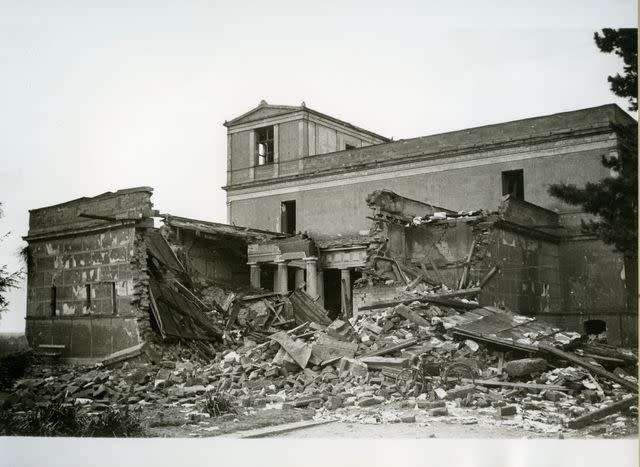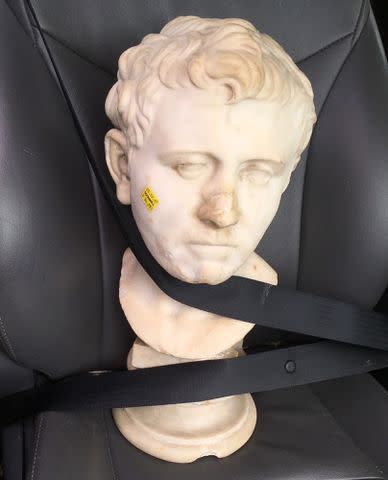2,000-Year-Old Roman Bust Bought for $35 at Texas Goodwill Heads to Germany Where King Once Kept It
- Oops!Something went wrong.Please try again later.
The sculpture of a Roman emperor was owned by King Ludwig I of Bavaria before ending up in Texas after World War II

A more than 2,000-year-old marble bust of a Roman emperor will soon be heading back to Germany after an epic odyssey that included a stop at a Texas Goodwill store where it sold for $35.
The historic piece, Portrait of a Man, was picked up by Laura Young, a savvy art collector, at the Austin thrift store in 2018. It was identified by a Sotheby's consultant and authenticated by the Bavarian Administration of State-Owned Palaces, Gardens, and Lakes, the San Antonio Museum of Art tells PEOPLE in a statement.
In 2022, the San Antonio museum obtained the wayward sculpture, and it's been on display there since. It will, however, return home to Germany on May 21.

The globe-trotting sculpture is a portrait of Nero Claudius Drusus Germanicus, a Roman emperor and politician who died in 9 B.C. The artwork dates back to the first century B.C. or first century A.D., per the Museum.
King Ludwig I of Bavaria was the confirmed owner of the piece as of 1833. He reportedly obtained it from an Italian art market.
Never miss a story — sign up for PEOPLE's free daily newsletter to stay up-to-date on the best of what PEOPLE has to offer, from celebrity news to compelling human interest stories.
Ludwig I displayed the artwork in the courtyard of the Pompejanum, a full-scale replica of a Roman villa from Pompeii built in the 1840s, in Aschaffenburg, Germany.
The Pompejanum was badly damaged when Allied bombers targeted the town during World War II, and the historic sculpture disappeared after the U.S. Army set up military installations around Aschaffenburg in the days after the war.

It's believed that a U.S. soldier nabbed the sculpture and brought it back to Texas at some point between the 1940s and 1990s. Back in America, the bust went undetected until it turned up at the Austin Goodwill in 2018.
Laura Young, a local art collector, found the sculpture on the floor beneath a table in the thrift store, according to a 2022 press release from the San Antonio museum. After buying the piece, she said she "began a multi-year journey to determine its authenticity and origin" after realizing how old the work appeared to be.

"There were a few months of intense excitement after [it was identified and authenticated], but it was bittersweet ... Either way, I'm glad I got to be a small part of [its] long and complicated history, and he looked great in the house while I had him," Young said in the museum's press release last year.
The art will remain on display in San Antonio until May 21. After that, it heads back to its rightful home at the Pompejanum Museum in Aschaffenburg.
For more People news, make sure to sign up for our newsletter!
Read the original article on People.

